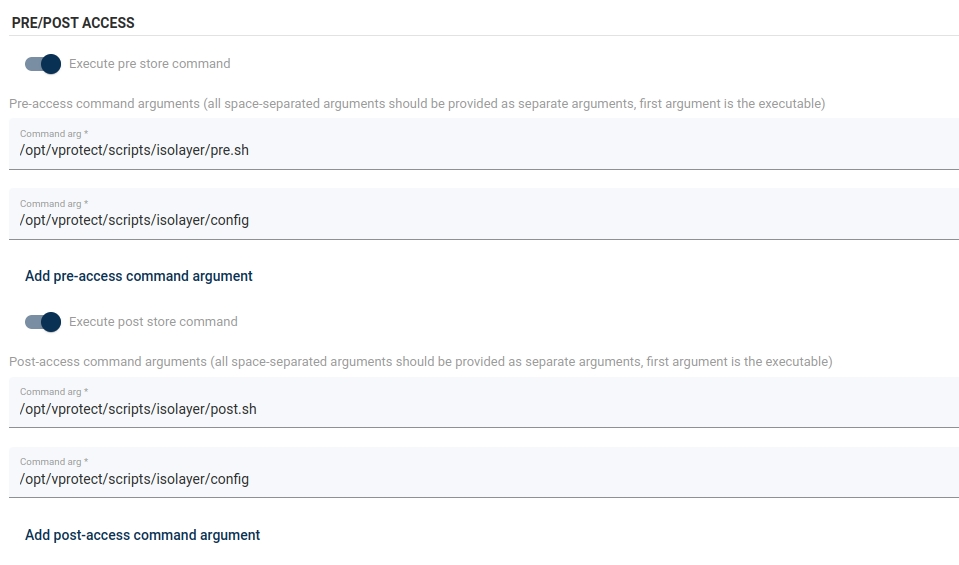isoLayer (Synthetic)
Prerequisites
You need a NFS server with storage with XFS filesystem to properly configure isoLayer Backup Destination in vPlus.
Preparation
On NFS server, we need to create NFS share, for example:
mkdir /NFSEdit file
/etc/exportsto add access to this share:/NFS SBR_NODE_IP(rw,sync,no_all_squash,no_root_squash)Where SBR_NODE_IP is IP of vPlus Node, which will have access to this share
Generate new SSH keys, without any password:
ssh-keygenAdd new public key to
/root/.ssh/authorized_keysfilecat /root/.ssh/id_rsa.pub > /root/.ssh/authotized_keysCopy generated private key (id_rsa) to vPlus Node host
scp /root/.ssh/id_rsa root@SBR_NODE_IP:/opt/vprotect/.ssh/SSH to vPlus Node and change owner of this file:
chown vprotect:vprotect /opt/vprotect/.ssh/id_rsaConnect from vPlus Node to NFSs:
ssh -i /opt/vprotect/.ssh/id_rsa root@NFSsaccept new fingerprint and exit from remote session
Copy last line from
/root/.ssh/known_hostsfile into/opt/vprotect/.ssh/known_hostsfileConfigure isoLayer connection. Edit
/opt/vprotect/scripts/isoLayer/configfile:vi /opt/vprotect/scripts/isoLayer/config #Add the following content NFS_HOST=NFS4.2_HOST_IP SSH_USER=root SSH_KEY=~/.ssh/id_rsa NFS_HOST_PATTERN=NODE_IP NFS_ROOT=PATH_FOR_MOUNT_POINTS NFS_OPTS=rw,sync,insecure,no_root_squash,no_subtree_checkwhere:
NFS_HOST- IP address of NFS serverNFS_HOST_PATTERN- IP address (CIDR) of NFS server, for example: 10.10.0.0/24NFS_ROOT- NFS server share path, where we want to store our backups, for example /NFS/backup
Creating isoLayer backup destination
Login into vPlus UI.
From menu on the left, select Backup Destinations -> File System.
On the right, click Create Backup Destination button and choose isoLayer (Synthetic).
In new window:
type name for the backup destination
select Node Configurations
provide backup destination path – this is a place, where from vPlus Node perspective, isoLayer will be a temporary mount share from NFS server
Check if pre- and post-scripts are active, and correct paths are provided like in example:

Click Save button
Now you can use this isoLayer connection to store your backup.